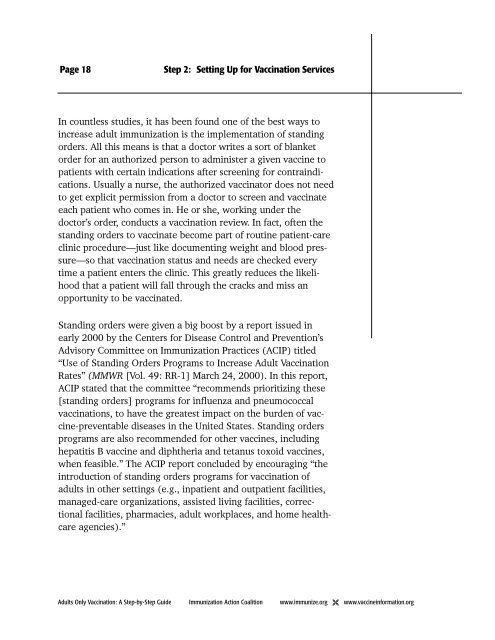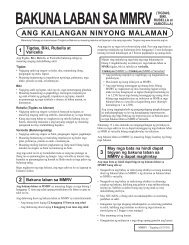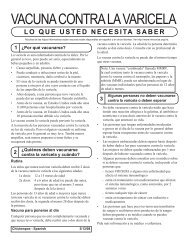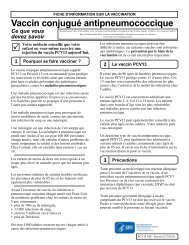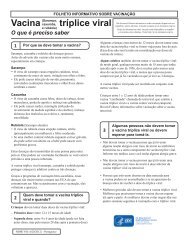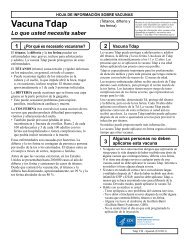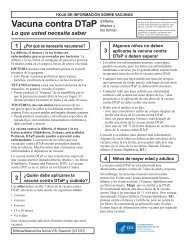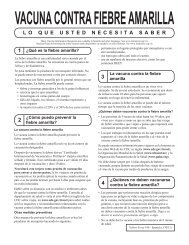AOV Guide Step 2: Setting Up for Vaccination Services
AOV Guide Step 2: Setting Up for Vaccination Services
AOV Guide Step 2: Setting Up for Vaccination Services
Create successful ePaper yourself
Turn your PDF publications into a flip-book with our unique Google optimized e-Paper software.
Page 18<br />
<strong>Step</strong> 2: <strong>Setting</strong> <strong>Up</strong> <strong>for</strong> <strong>Vaccination</strong> <strong>Services</strong><br />
In countless studies, it has been found one of the best ways to<br />
increase adult immunization is the implementation of standing<br />
orders. All this means is that a doctor writes a sort of blanket<br />
order <strong>for</strong> an authorized person to administer a given vaccine to<br />
patients with certain indications after screening <strong>for</strong> contraindications.<br />
Usually a nurse, the authorized vaccinator does not need<br />
to get explicit permission from a doctor to screen and vaccinate<br />
each patient who comes in. He or she, working under the<br />
doctor’s order, conducts a vaccination review. In fact, often the<br />
standing orders to vaccinate become part of routine patient-care<br />
clinic procedure—just like documenting weight and blood pressure—so<br />
that vaccination status and needs are checked every<br />
time a patient enters the clinic. This greatly reduces the likelihood<br />
that a patient will fall through the cracks and miss an<br />
opportunity to be vaccinated.<br />
Standing orders were given a big boost by a report issued in<br />
early 2000 by the Centers <strong>for</strong> Disease Control and Prevention’s<br />
Advisory Committee on Immunization Practices (ACIP) titled<br />
“Use of Standing Orders Programs to Increase Adult <strong>Vaccination</strong><br />
Rates” (MMWR [Vol. 49: RR-1] March 24, 2000). In this report,<br />
ACIP stated that the committee “recommends prioritizing these<br />
[standing orders] programs <strong>for</strong> influenza and pneumococcal<br />
vaccinations, to have the greatest impact on the burden of vaccine-preventable<br />
diseases in the United States. Standing orders<br />
programs are also recommended <strong>for</strong> other vaccines, including<br />
hepatitis B vaccine and diphtheria and tetanus toxoid vaccines,<br />
when feasible.” The ACIP report concluded by encouraging “the<br />
introduction of standing orders programs <strong>for</strong> vaccination of<br />
adults in other settings (e.g., inpatient and outpatient facilities,<br />
managed-care organizations, assisted living facilities, correctional<br />
facilities, pharmacies, adult workplaces, and home healthcare<br />
agencies).”<br />
Adults Only <strong>Vaccination</strong>: A <strong>Step</strong>-by-<strong>Step</strong> <strong>Guide</strong> Immunization Action Coalition www.immunize.org www.vaccinein<strong>for</strong>mation.org


